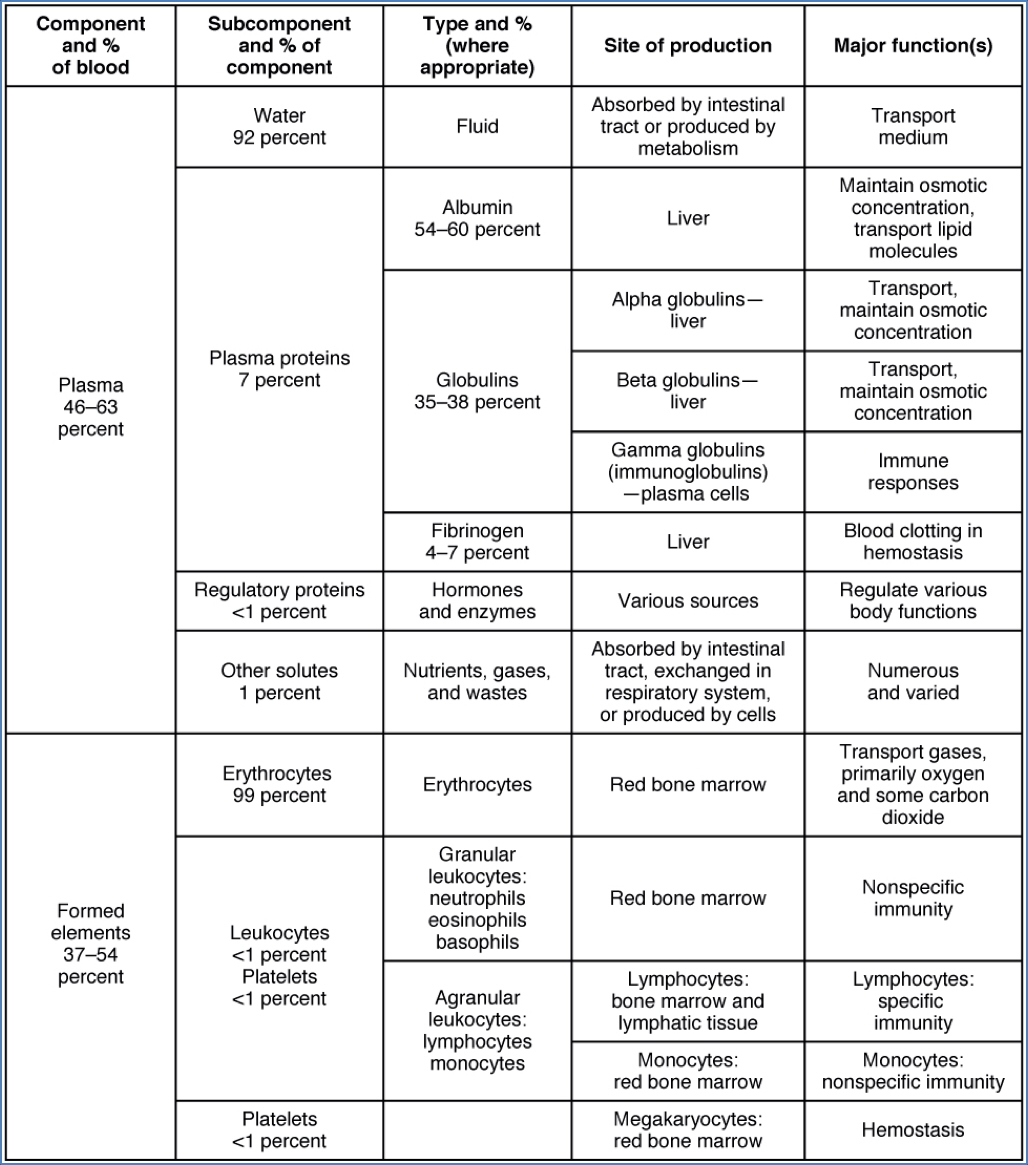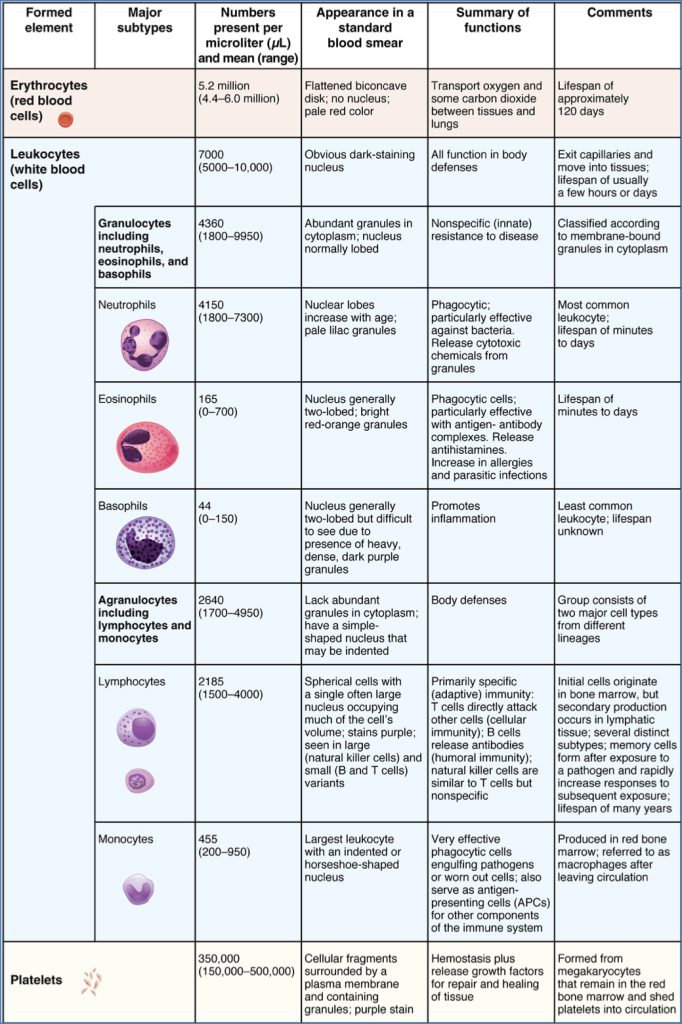Table of Contents
Overview
Blood is a vital connective tissue that serves as the body’s main transport medium, comprising about 8% of body weight. It plays essential roles in distribution, regulation, and protection. Understanding blood composition and function is foundational for clinical medicine, including diagnostics, transfusion, and the management of systemic diseases. This article covers the components of blood, their physiological roles, and the clinical significance of each part — a must-know for final-year medical students preparing for OSCEs, exams, and ward-based applications.
Definition
- Blood is a specialized connective tissue made up of:
- Living cells (formed elements)
- A non-living fluid matrix (plasma)
- Circulates through vessels to deliver nutrients, gases, and remove waste
Physical Properties
- Makes up ~8% of body weight
- More dense and 5x more viscous than water
- pH: 7.35–7.45
- Temp: ~37.4°C
- Average volume:
- ~5L in adult women
- ~5.5L in adult men
Functions
Distribution
- Oxygen (from lungs to tissues)
- Carbon dioxide and metabolic waste (to lungs/kidneys for excretion)
- Hormones (from endocrine glands to targets)
Regulation
- Body temperature (via heat distribution and vasodilation/constriction)
- pH balance (via buffers, proteins)
- Fluid volume in circulatory system
Protection
- Clotting to prevent blood loss (platelets + clotting factors)
- Immune defence (leukocytes + antibodies)
Components


Overview
- Blood is composed of:
- Plasma (46–63%)
- Formed elements (37–54%): red cells, white cells, platelets
Plasma
- ~90% water
- ~7% plasma proteins:
- Albumin (54–60%) – maintains osmotic pressure, transports lipids
- Globulins (35–38%):
- Alpha & beta globulins – transport
- Gamma globulins – immune function (antibodies)
- Fibrinogen (4–7%) – key role in clot formation
- Also contains:
- Nutrients, gases, waste products, ions (Na⁺, K⁺, Cl⁻, Ca²⁺, HCO₃⁻)
- Regulatory proteins, hormones, enzymes
- Serum: plasma without clotting factors (used in diagnostics)
Formed Elements
Red Blood Cells (Erythrocytes)
- ~99% of formed elements
- Produced in red bone marrow
- Function: transport oxygen (via haemoglobin) and carbon dioxide
White Blood Cells (Leukocytes)
- <1% of total blood volume
- Produced in bone marrow
- Major types:
- Granulocytes (contain granules, multilobed nuclei):
- Neutrophils (~60%) – first-line defence against bacteria and some cancers
- Eosinophils (~3%) – parasitic infections and allergies
- Basophils (~0.5%) – allergic responses
- Agranulocytes:
- Monocytes (~5%) – become macrophages and dendritic cells
- Lymphocytes (~30%):
- T-cells – cell-mediated immunity
- B-cells – produce antibodies (humoral immunity)
- Natural Killer (NK) cells – innate immunity
- Granulocytes (contain granules, multilobed nuclei):
Platelets (Thrombocytes)
- Cell fragments from megakaryocytes
- Involved in haemostasis (clot formation)

Summary
Blood is a dynamic connective tissue essential to human physiology, responsible for transporting oxygen, regulating homeostasis, and defending against disease. Its components — plasma, red cells, white cells, and platelets — each serve critical roles in maintaining health and responding to injury or infection. Understanding blood structure and function is foundational in medicine. For a broader context, see our Blood & Haematology Overview page.